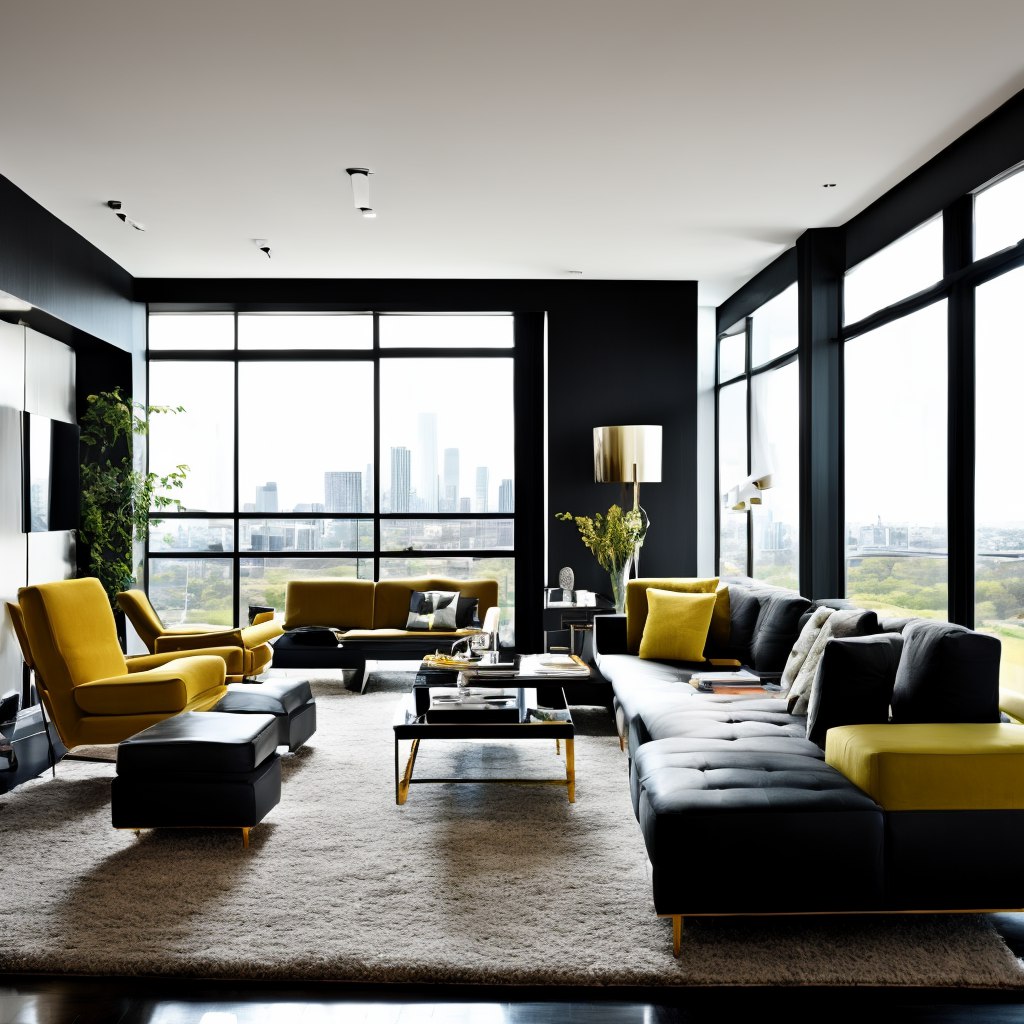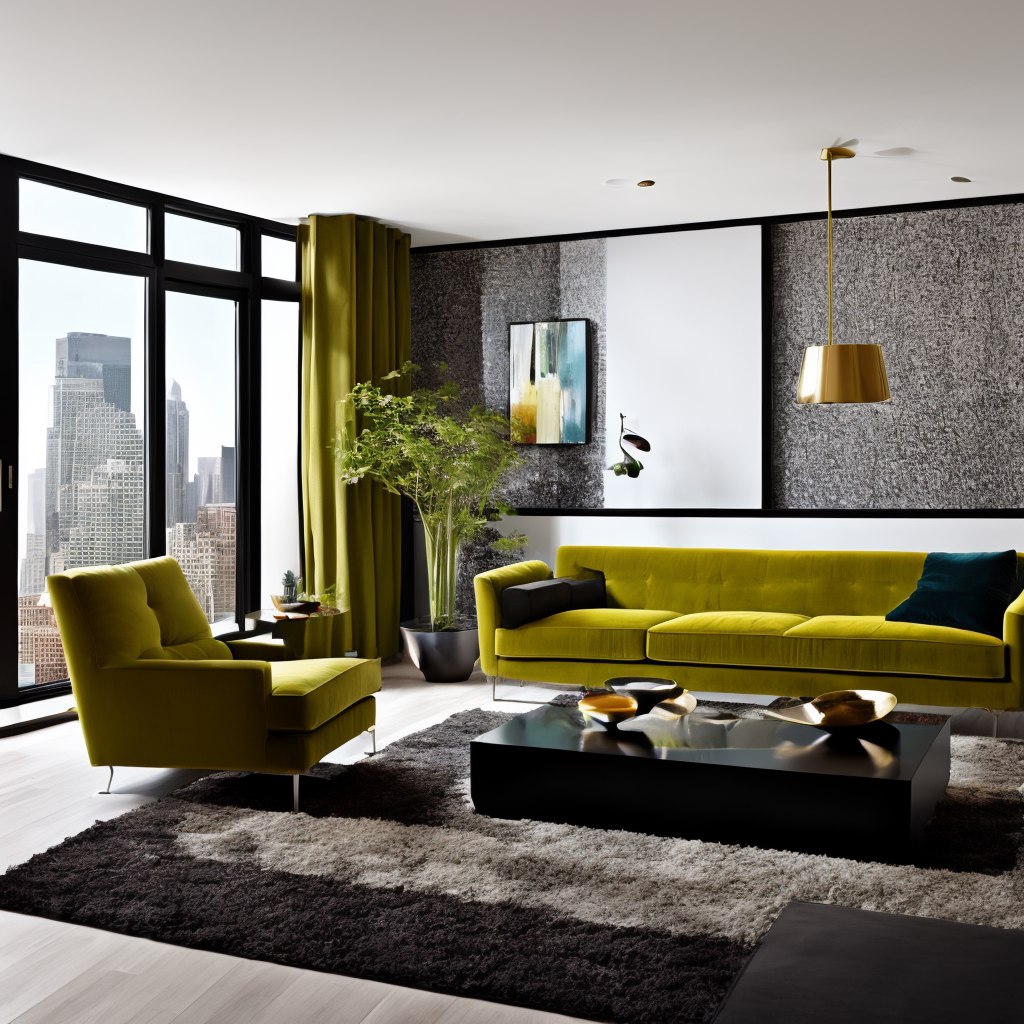▎Elevate Your Space: Inspiring Modern Living Rooms
▎Introduction
In the realm of interior design, the living room stands as a pivotal space that reflects not only personal style but also functionality. As architects and families seek to create environments that are both aesthetically pleasing and practical, modern living rooms have emerged as a focal point of inspiration. This article delves into the nuances of designing modern living rooms, offering insights that cater to both professionals in architecture and families looking to elevate their spaces.
▎Understanding Modern Living Room Design
▎1. The Essence of Modern Design
Modern design is characterized by simplicity, clean lines, and a focus on functionality. It often employs a neutral color palette, allowing for versatility and easy integration of various decor elements. The goal is to create a space that feels open and inviting while maintaining a sense of sophistication.
▎2. Key Principles of Modern Living Room Design
– Functionality: Every element in a modern living room should serve a purpose. This includes furniture, decor, and even layout.
– Simplicity: Avoid clutter and excessive ornamentation. A minimalist approach allows for a more serene atmosphere.
– Natural Light: Maximizing natural light is crucial in modern design. Large windows or open layouts can enhance the feeling of spaciousness.
– Balance: Achieving balance through symmetry or asymmetry can create visual interest without overwhelming the senses.
▎Inspiring Modern Living Room Ideas

▎1. Open Concept Living Spaces
▎Benefits of Open Concepts
Open concept living rooms have gained immense popularity in modern home design. By removing walls that separate the living room from adjacent spaces like the kitchen or dining area, architects can create a seamless flow that enhances interaction among family members.
▎Design Considerations
– Zoning: Use rugs or furniture arrangements to define different areas within the open space.
– Consistent Color Schemes: Maintain a cohesive color palette across adjoining areas to create harmony.
– Multi-functional Furniture: Opt for furniture that can serve multiple purposes, such as ottomans that double as storage.
▎2. Statement Furniture Pieces
▎The Power of Focal Points
In modern living rooms, statement furniture pieces can serve as focal points that draw the eye and anchor the space. A bold sofa or an artistic coffee table can set the tone for the entire room.
▎Selection Tips
– Scale: Choose pieces that are proportionate to the size of the room. Oversized furniture in a small space can feel cramped, while tiny pieces in a large room may get lost.
– Material and Texture: Experiment with different materials—such as wood, metal, and fabric—to add depth and interest.
▎3. Incorporating Technology
▎Smart Living Rooms
Technology integration is a hallmark of modern living rooms. From smart TVs to automated lighting systems, technology can enhance both convenience and ambiance.
▎Considerations for Integration
– Hidden Wiring: Plan for cable management to maintain a clean look.
– Smart Controls: Use centralized systems to control lighting, temperature, and entertainment options seamlessly.
▎4. Layered Lighting
▎Importance of Lighting
Lighting plays a crucial role in setting the mood of a living room. A combination of ambient, task, and accent lighting can create a dynamic atmosphere.
▎Types of Lighting
– Ambient Lighting: Overhead fixtures or recessed lighting provide general illumination.
– Task Lighting: Floor lamps or table lamps offer focused light for reading or activities.
– Accent Lighting: Use wall sconces or LED strips to highlight artwork or architectural features.
▎5. Textures and Materials
▎Creating Visual Interest
Incorporating various textures can make a modern living room feel warm and inviting. Mixing materials like wood, metal, glass, and textiles adds depth to the design.
▎Suggestions for Textures
– Soft Furnishings: Include plush rugs, cushions, and throws to soften hard surfaces.
– Natural Elements: Wood accents or stone features can bring an organic touch to the space.
▎Color Schemes for Modern Living Rooms
▎1. Neutral Palettes
Neutral colors form the backbone of modern design. Shades of white, gray, beige, and taupe create a serene environment that allows for flexibility in decor.
▎2. Bold Accents
While neutrals dominate, incorporating bold accent colors can add personality. Consider using vibrant hues through accessories like cushions, artwork, or decorative objects.
▎3. Monochromatic Schemes
A monochromatic color scheme utilizes varying shades of a single color to create depth while maintaining cohesion. This approach can be particularly striking in modern design.
▎Sustainable Design Practices
▎1. Eco-Friendly Materials
As sustainability becomes increasingly important, using eco-friendly materials in modern living rooms is essential. Look for furnishings made from reclaimed wood, recycled metals, or organic textiles.
▎2. Energy Efficiency
Incorporating energy-efficient appliances and lighting can significantly reduce the environmental impact of your living space while also lowering utility bills.
▎Personalizing Your Space
▎1. Family-Centric Design
For families, creating a living room that accommodates various activities is vital. Consider incorporating built-in storage solutions for toys or books to keep the space organized.
▎2. Reflecting Personal Style
Encourage family members to contribute their tastes to the design process. Incorporate personal artifacts or artwork that resonate with your family’s history and experiences.
▎Conclusion
Elevating your living space through modern design requires careful consideration of functionality, aesthetics, and personal style. By focusing on clean lines, thoughtful layouts, and innovative materials, architects and families alike can create inspiring modern living rooms that serve as the heart of their homes. Embrace these ideas to transform your space into a sanctuary that reflects your unique identity while fostering connection and comfort among family members.
—
By integrating these insights into your design process, you can ensure that your modern living room not only meets your functional needs but also serves as an inspiring backdrop for life’s memorable moments. Whether you’re an architect guiding clients through their design journeys or a family seeking to enhance your home environment, these principles will help you achieve an elevated living space that truly resonates with all who enter it.
